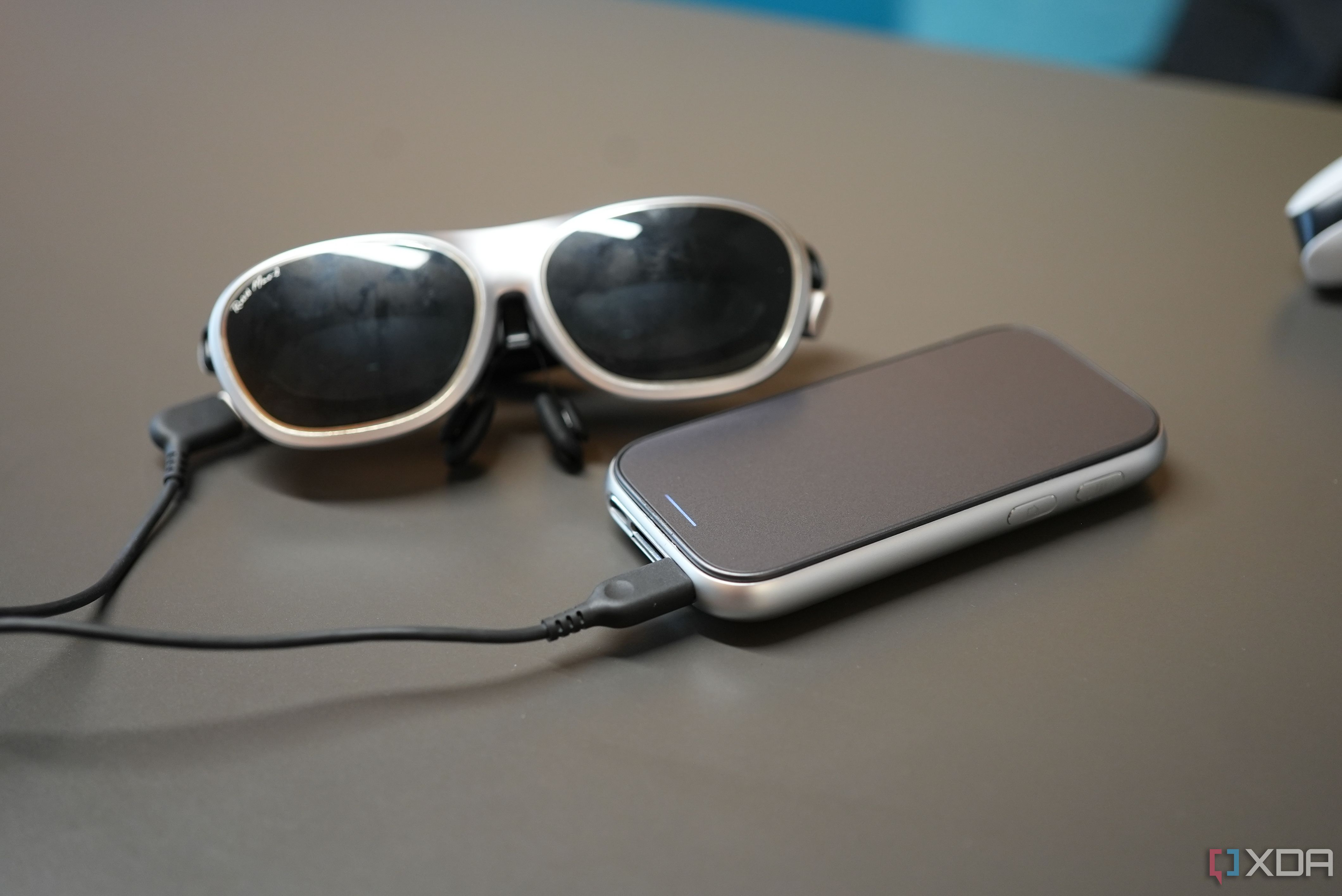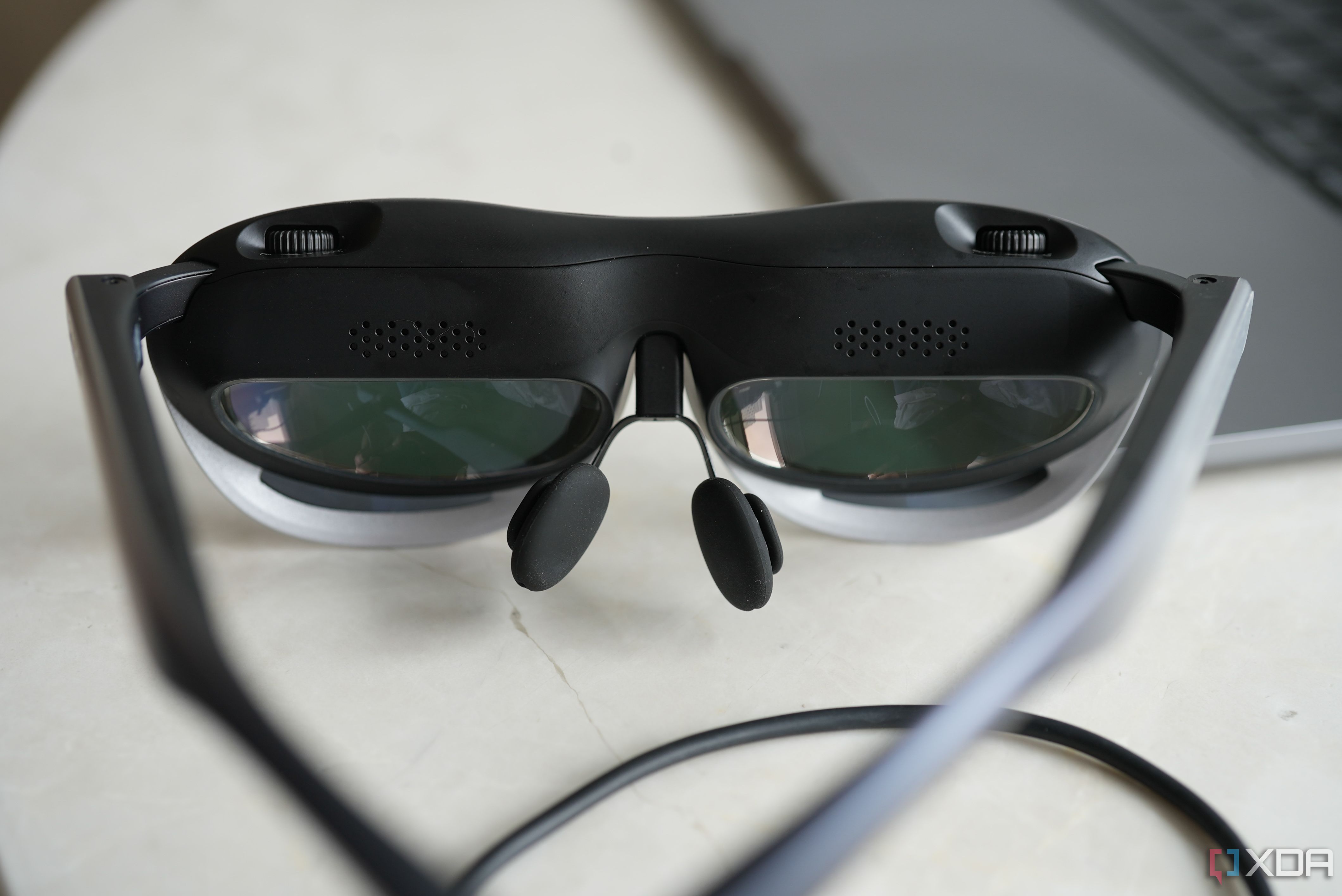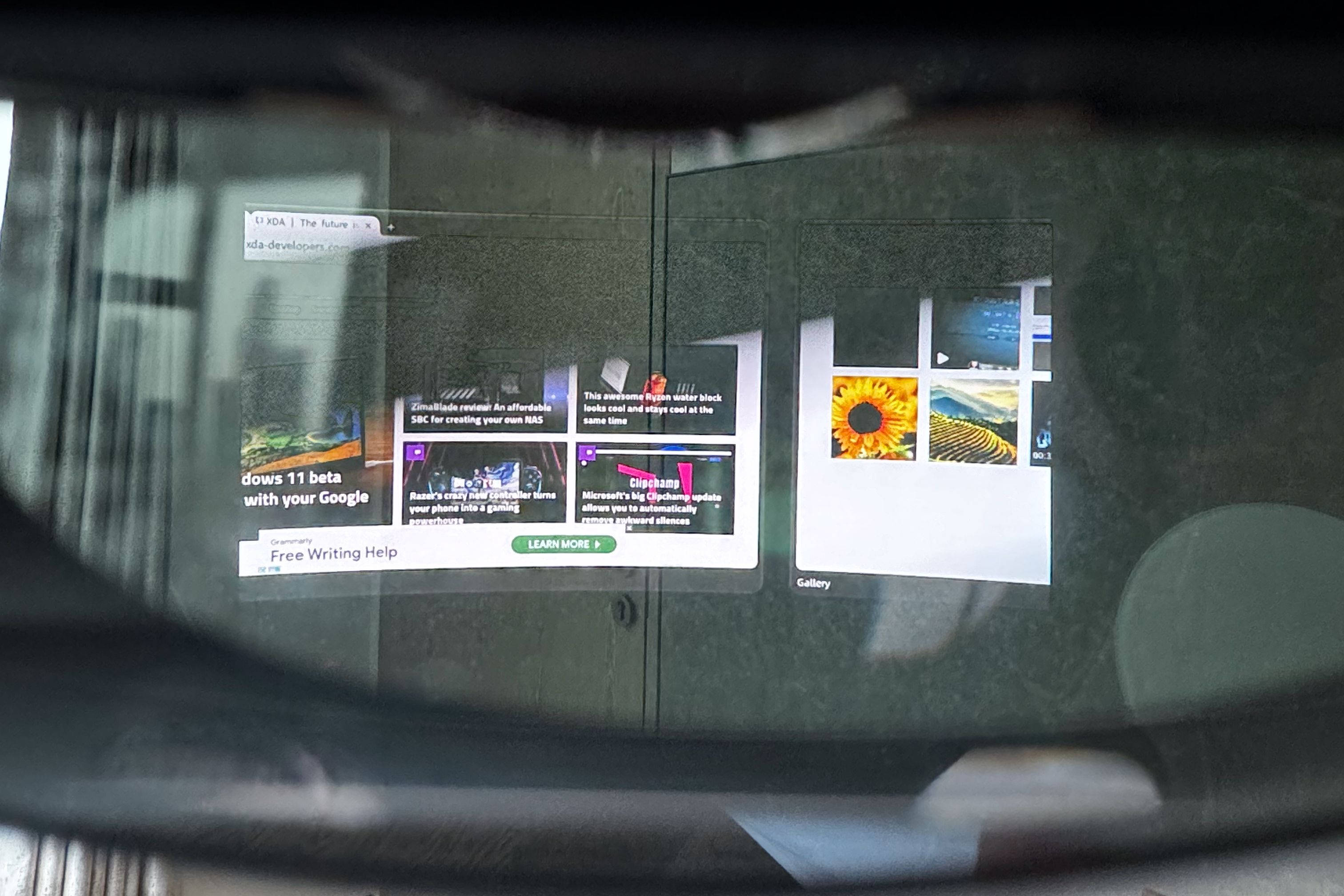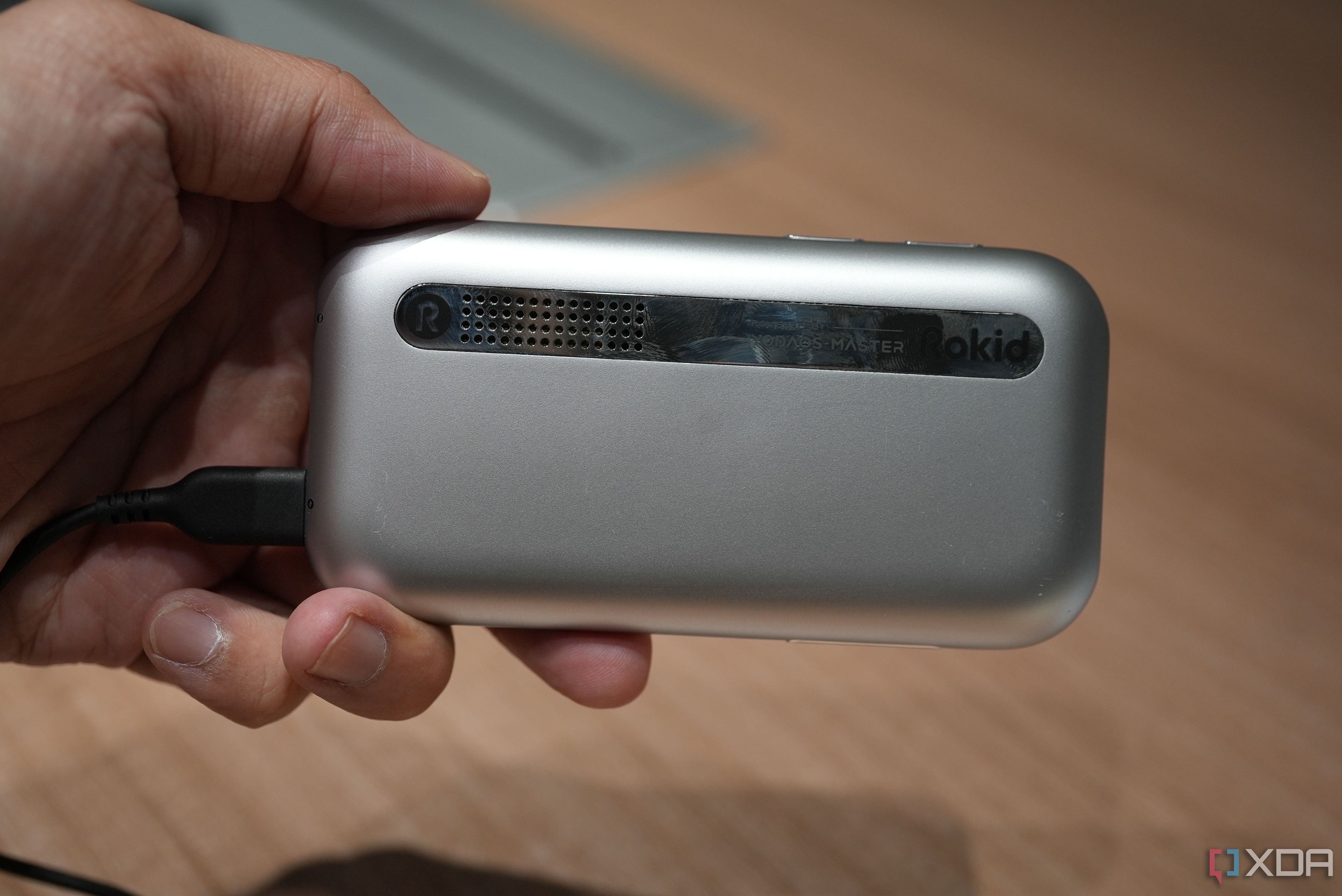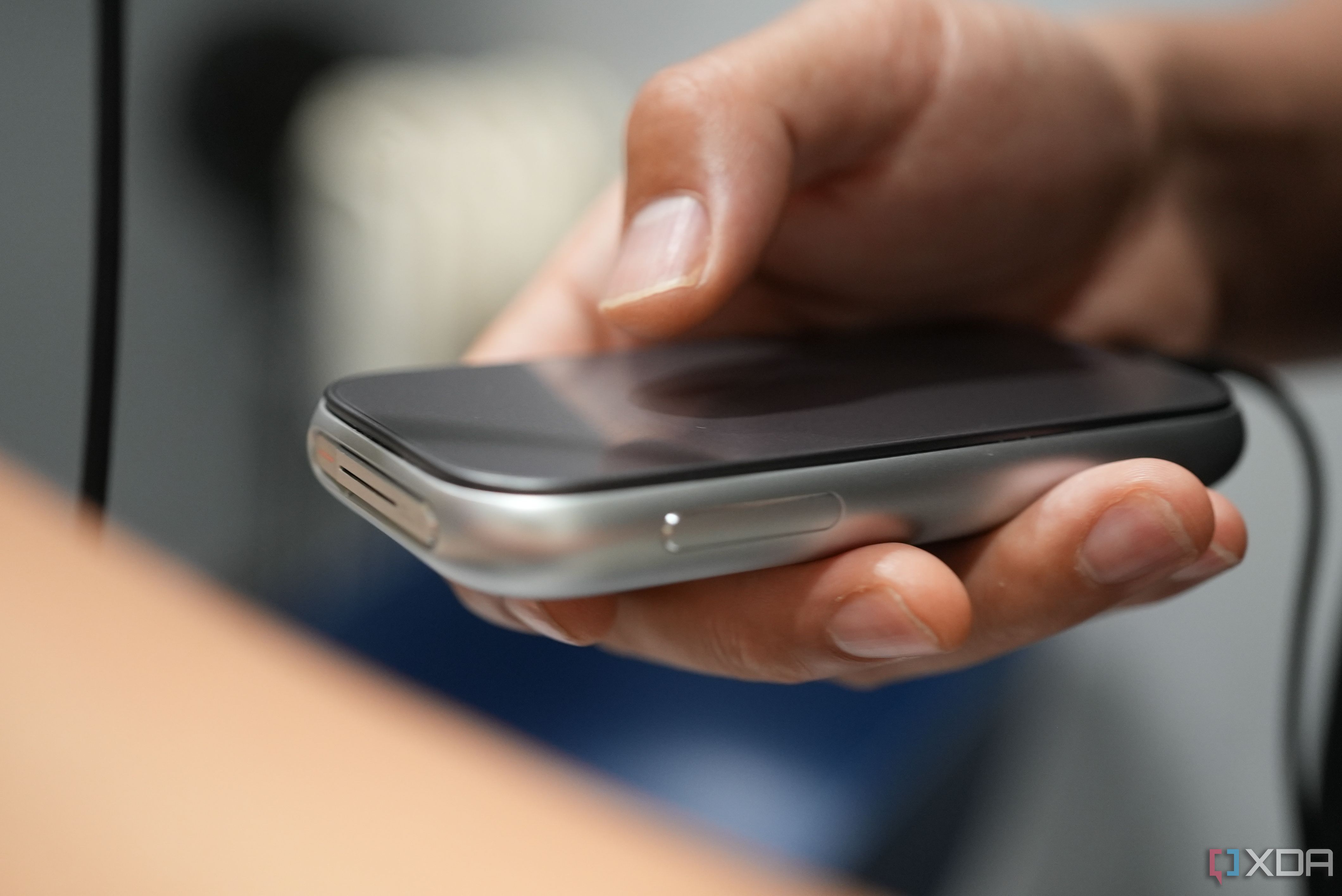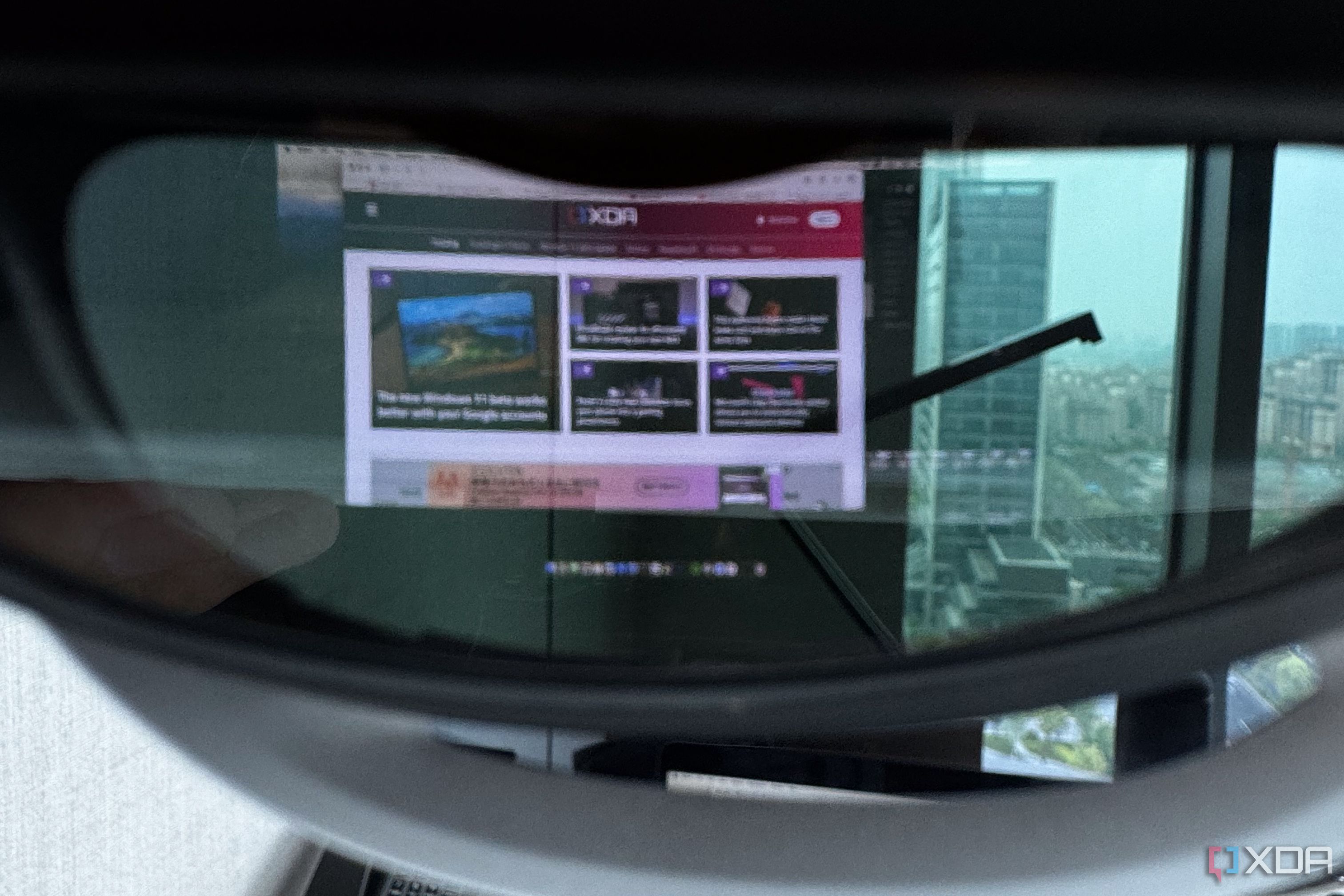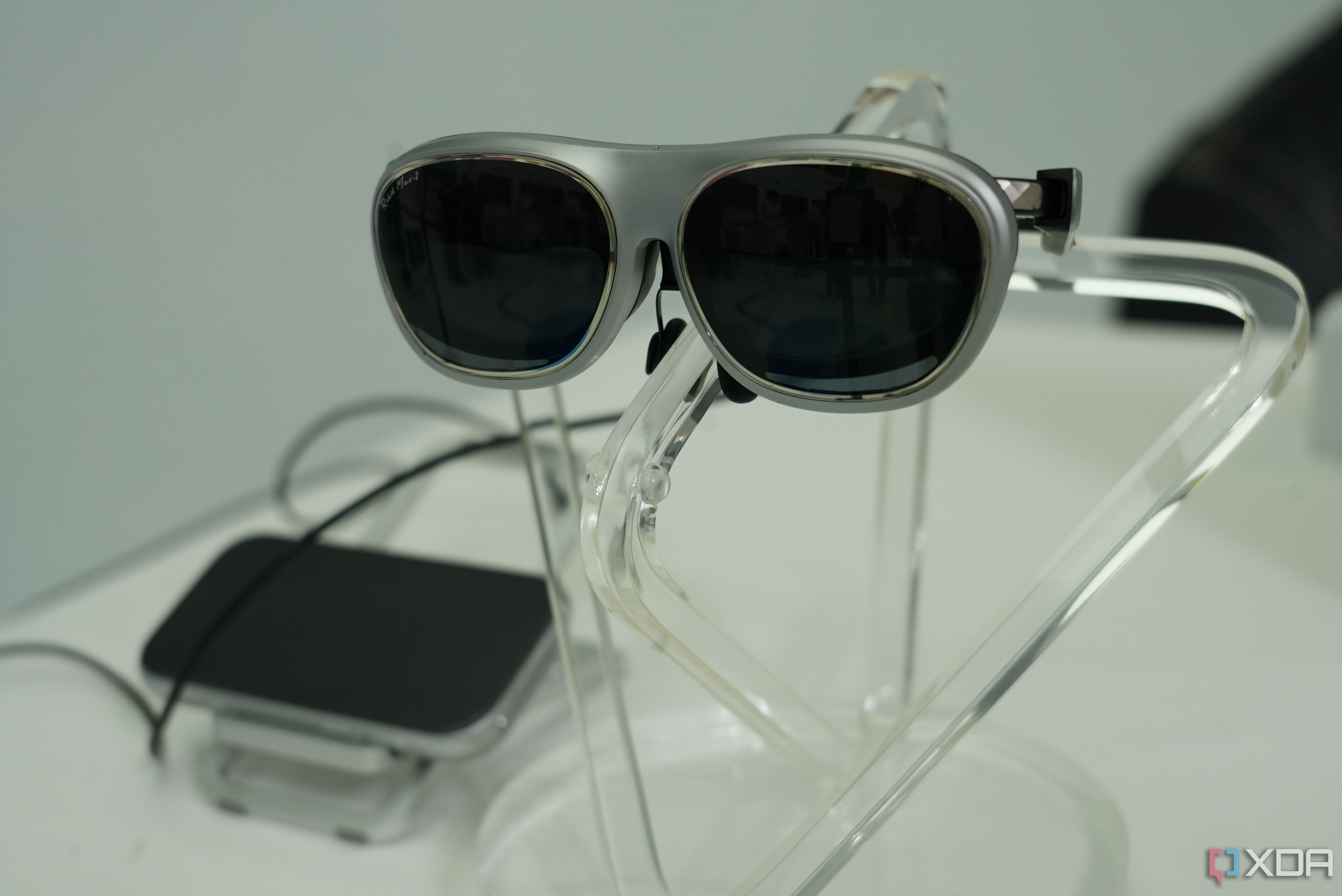I’ve been testing my fair share of consumer AR glasses from brands like Rokid, TCL, XReal, and Viture, as the first three are definitely the current market leaders. While I find them very useful as wearable screens (my colleagues feel the same way), they haven’t been doing much with Augmented Reality thus far. Rokid is looking to change that with the newly-announced Rokid AR Lite: a kit which includes a new pair of AR glasses named Rokid Max 2 and a phone-shaped computing box named Rokid Station 2.
I have already tested the first generation of both Rokid products last year (separately, as they were released months apart), and while the Rokid Max 2 brings only minimal upgrades over the first pair of Max lenses, the Rokid Station 2 improves so much on the original that it seems almost like a new product entirely.
The Glasses
The Rokid Max 2 glasses and Rokid Station 2
The Rokid Max 2 is a pair of AR glasses with two MicroOLED screens projecting visuals to the wearer’s eyes via bird-bath optics. The glasses do not have a computing chip or battery inside, and thus must be plugged into a source device during use. You can plug them into most modern laptops or phones with a USB-C port, and your view should mirror the device’s screen.
A pair of MicroOLED screens behind each eye
What’s new with the Rokid Max 2 is that the display now simulates the effects of a curved screen. When I plug the glasses into my MacBook, I get a widescreen recreation of my MacBook desktop in a curved monitor style, with each end curving towards me. The screen is said to be about the equivalent of a 215-inch screen viewed from 20 feet away. When I connected to a wide-screen device, the virtual screen just about filled my entire field of view.
Notice the virtual screens are subtly curved.
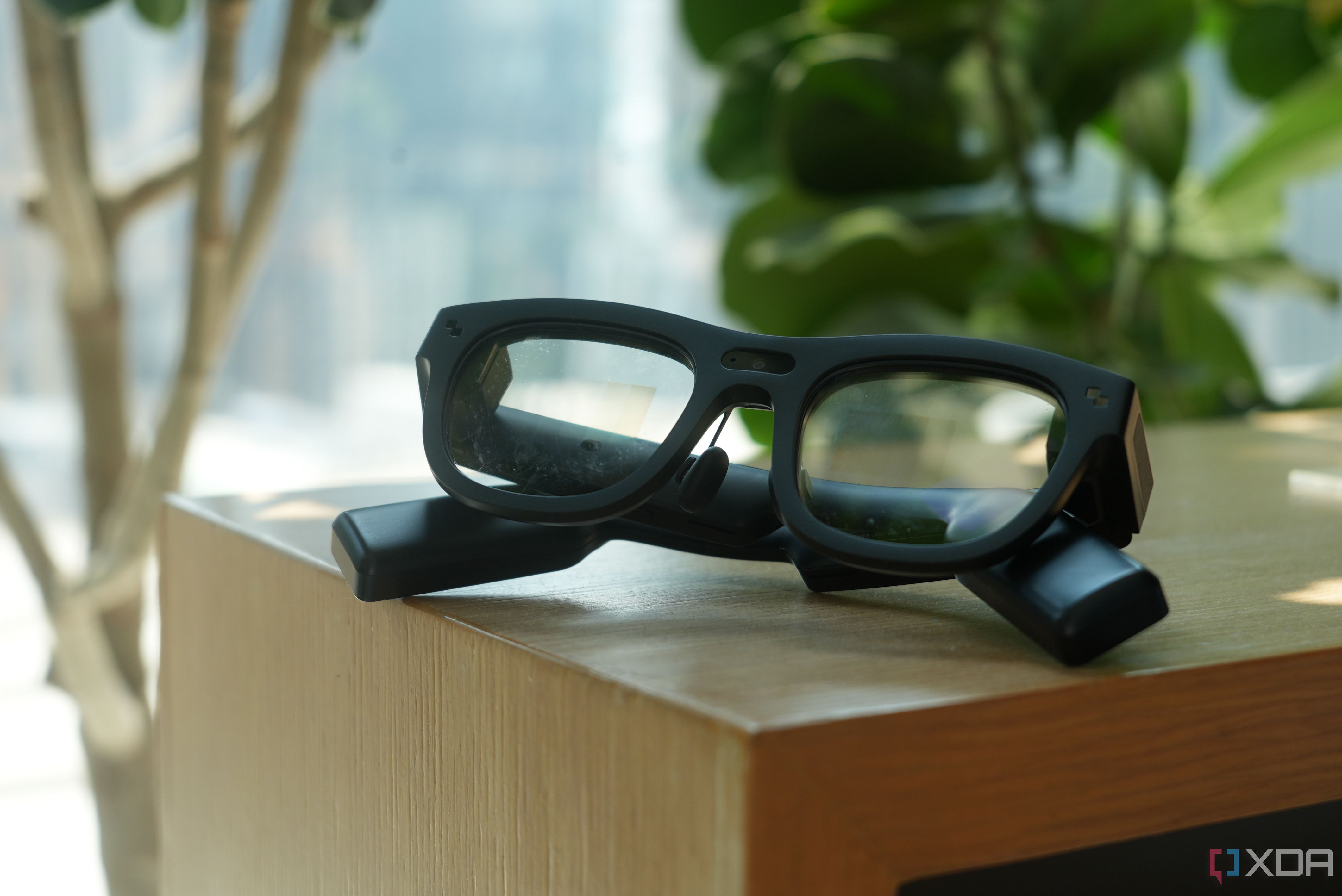
TCL RayNeo X2 review: A first step towards true AR glasses, but still work to do
The RayNeo X2 are truly wireless glasses that can project visual overlay onto the real world and give you surprisingly smart AI help
The Rokid Max 2 weighs 75g and feels comfortable to wear, with arms connected to a flexible hinge. There are also dials to adjust the diopters for those who are near sighted.
The Console
The Rokid Station 2
As I mentioned earlier, the major upgrade to this system is the Rokid Station 2. Essentially a small computing box powered by the Snapdragon 6 Gen 1, the Station 2 runs an Android skin developed by Rokid. It can run Android apps and the AR apps developed by Rokid. The Station 2 can run three apps at once in side-by-side floating windows, simulating the effects of a triple-screen monitor setup. The three windows are fixed in place spatially, meaning that I need to physically turn my head to look at each screen. There’s a 5,000 mAh battery inside, along with 8GB of RAM and 128GB of storage.
The body of the Station 2 houses a multi-touch trackpad which supports taps, swipes, and gestures such as pinching in and out. You can navigate through the UI with the trackpad or by holding the Station 2 in your hand and pointing it like a laser remote.
Rokid Station 2 touchpad
For consuming media or scrolling through social media, these two navigation methods are perfectly fine. But for me, or others who also plan on using AR glasses for productivity use, I’d actually pair it with a wireless keyboard and mouse/trackpad. I tried this briefly, with XDA’s CMS opened on one central web browser, Twitter in another window to the left, and Microsoft Outlook in another to the right, and it worked well.
Now, is the experience as immersive as the Vision Pro? No. The Vision Pro’s windows are larger, and animations are smoother. But the Rokid AR Lite system does provide a similar spatial computing experience to the Vision Pro, in a much, much lighter and cheaper package.
No sale date yet, but a US launch is confirmed
While Rokid has not announced pricing or availability yet, reps have confirmed that a US launch is going to happen by May. As for pricing, they’ve hinted that the AR Lite kit, which includes the Max 2 and Station 2, would be around $550-$600. The Max 2 glasses will work entirely as a standalone device, able to be plugged into phones, laptops, Nintendo Switches, etc. The Station 2 will only work with Rokid’s AR glasses.

Maria Malik is your guide to the immersive world of Virtual Reality (VR). With a passion for VR technology, she explores the latest VR headsets, applications, and experiences, providing readers with in-depth reviews, industry insights, and a glimpse into the future of virtual experiences.

